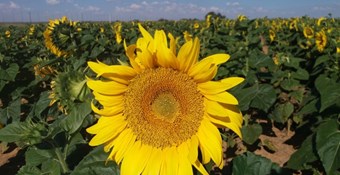Agri Hour
#Agbiz: USDA and IGC paint a positive picture of global grains and oilseed crop─── 05:00 Tue, 18 May 2021

As usual on the Agri Hour, Wandile Sihlobo, chief economist at the Agricultural Business Chamber of South Africa, Agbiz, provides a weekly insert about the latest on the global as well as South African agricultural markets.
He also provides more information about the latest developments in the agricultural sector.
Sien onderstaande PODCAST
In this week’s insert, Sihlobo takes a look at predictions for global grains and oilseed crops for the current production season.
“Last week, the United States Department of Agriculture (USDA) released its preliminary forecasts for the 2021/22 production season. The estimates were broadly in line with the International Grains Council (IGC) view we shared last week for all major grains and oilseeds. For example, if we start with maize, both the USDA and IGC forecast global production at 1,2 billion tonnes, which is up by 5% from the 2020/21 production season.
“This optimism is underpinned by expectations of a large crop in the US, Brazil, Argentina, Ukraine, China, EU, and Russia. As was the case with the IGC data release a week earlier, the reaction to the release of this data was generally muted. Some market participants are currently more focused on the near-term issues affecting the crop, such as persistent dryness in Brazil, which negatively affects the country’s 2020/21 maize crop.
“The 2021/22 maize crop will only be planted towards the end of the year across the Southern Hemisphere and is therefore not an immediate focus. Another concern in the market is dryness in parts of the US and Canada, threatening and slowing the 2021/22 maize crop. Nevertheless, the USDA and IGC maintain a reasonably positive view of maize production estimates of all the countries mentioned above, as they are evidently amongst those underpinning the expected 1,2 billion tonnes of maize in 2021/22, as we previously stated,” says Sihlobo.
He adds that the USDA and IGC’s forecasts for global maize stocks differ.
“The IGC estimates global maize stocks at the end of 2021/22 to be the smallest in nine years, at 264 million tonnes (down 3% y/y), in part, due to rising global consumption. Meanwhile, the USDA sees a 3% y/y potential improvement in global maize stocks to 292 million tonnes.
“Moving to wheat, the USDA forecasts a 2% y/y increase in global production to 788 million tonnes. This is slightly below the IGC forecast of 790 million tonnes. The general improvement in crop prospects is primarily attributed to better outlooks in Europe and North Africa, the US, Ukraine, China, UK, and India, amongst other countries. The USDA forecasts stocks at roughly unchanged levels from the 2020/21 season, at around 294 million tonnes. Ideally, the reasonably large stocks would lead to a softening in prices and be beneficial for importing countries such as South Africa. We are yet to see if such will unfold in the coming months.
“The USDA forecasts a 6% increase in 2021/22 global soybeans production to a record 386 million tonnes (this is slightly higher than the IGC forecast of 383 million tonnes). The major contributing countries to this USDA forecast are the US and South America. For the Southern Hemisphere countries, as we said in last week’s note, we will only know if the optimism in plantings holds at the end of this year, which is when plantings will start.
“Significantly, if everything were to go as the USDA estimates, the 2021/22 global soybeans stocks would recover by 5% y/y to 91 million tonnes. Such a recovery would have slight downward pressure on prices which have remained relatively elevated primarily because of strong Chinese demand.
“In rice, the USDA forecasts 2021/22 global production at 503 million tonnes, up by 1% y/y. Nevertheless, the stocks could fall by 1% y/y to 176 million tonnes because of growing consumption. This could add upward pressure on prices, which is not conducive for importing countries such as South Africa.
“In sum, we maintain the same view as the previous week, which is that the initial global production forecasts for the 2021/22 grains and oilseeds production paint a slightly better picture than initially feared. If more on-the-ground evidence emerges in the coming months to support these forecasts, then the global agricultural prices would potentially cool off from the current higher level. Such a price trend would filter into the South African grains market,” concludes Sihlobo.
OFM News













